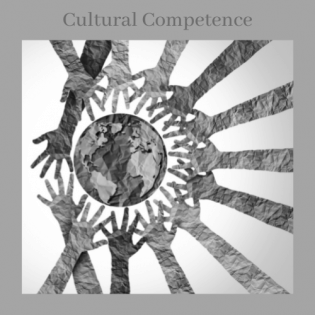What Is Culture?
We define culture and explore the cultural traits of individuals and the group collectively.
- Define culture
- Name a culture with which you identify
- YouTube video
- graphic organizer
- chart paper or white board
Prepare a graphic organizer of your own culture as a model for the young people. This may look like a center circle with your name in it surrounded by radiating arms pointing to different cultural traits and behaviors related to race, faith, food, identity groups, family traditions, clothing, music, activities, celebrations, and roles.
culture: the traits and behaviors of a group of people, including traditions, food, activities, clothing, music, religion, and celebrations
Encourage learners to talk with their grownups about culture and what groups they are part of. Invite learners to bring in an artifact from their culture (a food item, a piece of clothing or tapestry, a book, a song, etc) to share with the group.
Listen carefully to how youth identify with different types of groups (they may be different than you expected). Maybe some identify largely with their race, while others identify largely as a member of a club or organization, for example. Discuss with the youth these differences. Also pay special attention to what terms individual learners use to identify themselves, and aim to use that same terminology when interacting with them.
Discuss: In what ways does your culture express giving?
“Kids Share Their Cultural Tradition | Show & Tell” from Hiho Kids (https://www.youtube.com/watch?v=xerrjjAyZs8)
Instructions
Anticipatory Set:
Ask the young people what a tradition is. Discuss some traditions that their families participate in. Inform the group that they are going to watch a video of other young people sharing their traditions from all over the world.
Show the video “Kids Share Their Cultural Tradition | Show & Tell.” Discuss with the group whether any of the traditions they saw were new to them. Invite questions from the group about traditions they saw.
Introduce the term culture: the traits and behaviors of a group of people, including traditions, food, activities, clothing, music, religion, and celebrations.
Make clear that everyone belongs to one or more cultures, maybe based on where they live, their roles, or their heritage.
Introduce an activity to help young people identify their own culture, and explore the many traits and behaviors. This aligns with SEL self awareness.
As a model, show the group how you identify with different culture(s), using a graphic organizer web with your name in the center. This may include ethnicity, gender, religion, nation of origin, language spoken, and more.
Then young people complete their own graphic organizers, describing their culture(s). While completing their own, they may work in pairs or small groups to discuss and build understanding.
Invite individuals to share their graphic organizers with the whole group. Identify commonalities and differences between them, raising awareness of the traits of diverse people.
Make the connection that throughout this unit, they will learn about cultures all over the world and in their own communities.
Philanthropy Framework
-
Strand PHIL.I Definitions of Philanthropy
-
Standard DP 06. Role of Family in Philanthropy
-
Benchmark HS.1 Discuss the role of family life in shaping a democratic society.
-
Benchmark E.1 Identify common roles that families play in society.
-
Benchmark MS.2 Discuss the function of family traditions and role modeling in teaching about sharing and giving.
-
Benchmark E.3 Identify the major cultural subgroups in the nation's society.
-
-
-
Strand PHIL.II Philanthropy and Civil Society
-
Standard PCS 02. Diverse Cultures
-
Benchmark MS.1 Examine several examples of philanthropic traditions practiced in diverse cultures.
-
Benchmark E.1 Give examples of philanthropic traditions of diverse cultures.
-
Benchmark E.3 Identify the similarities in philanthropic behavior among people of different cultural backgrounds.
-
-
